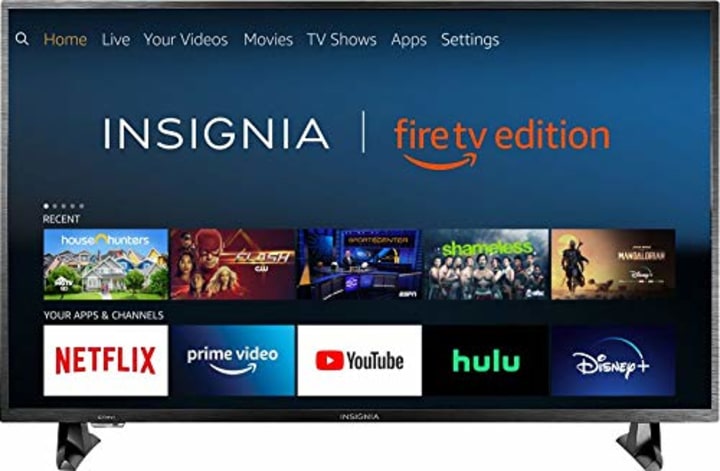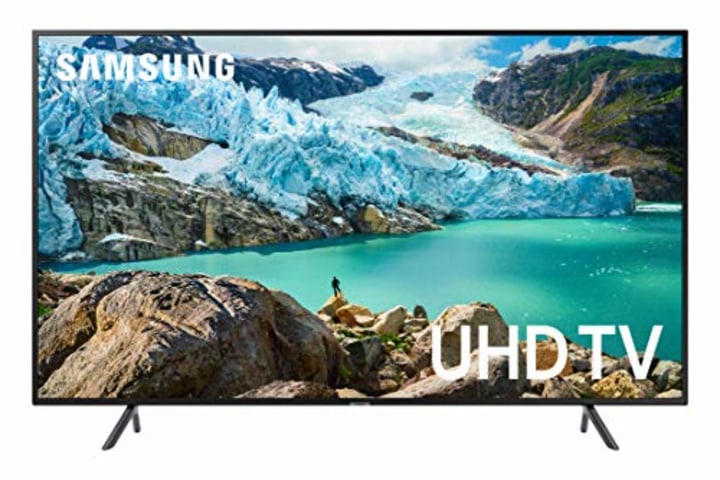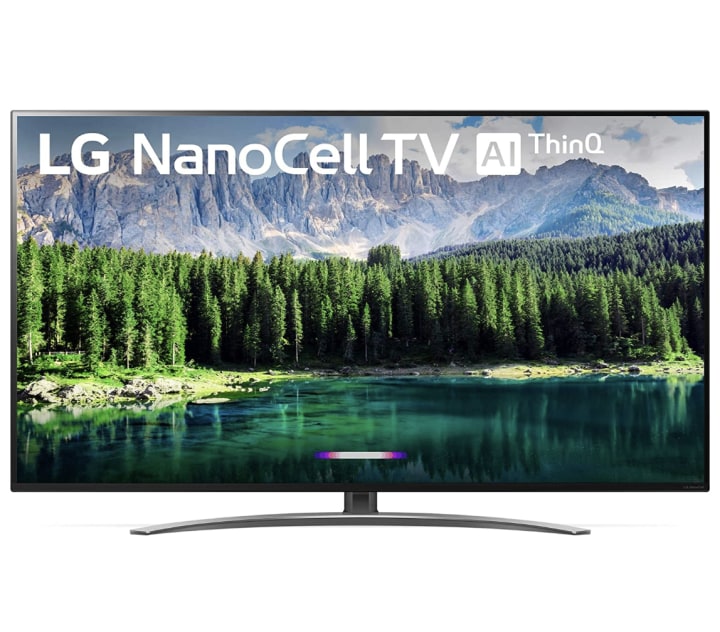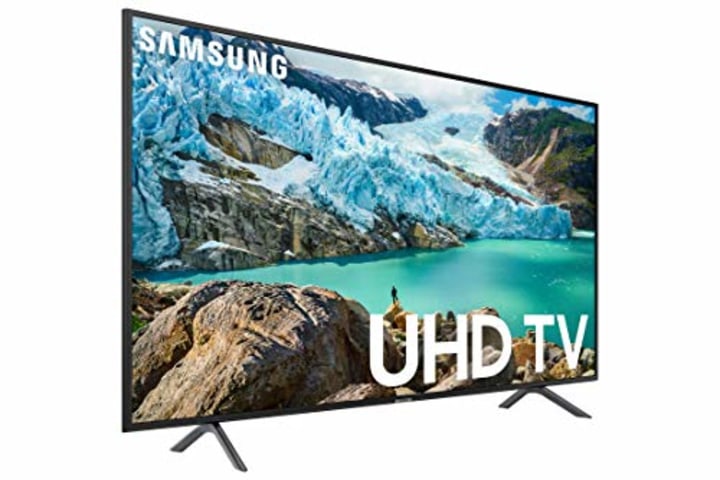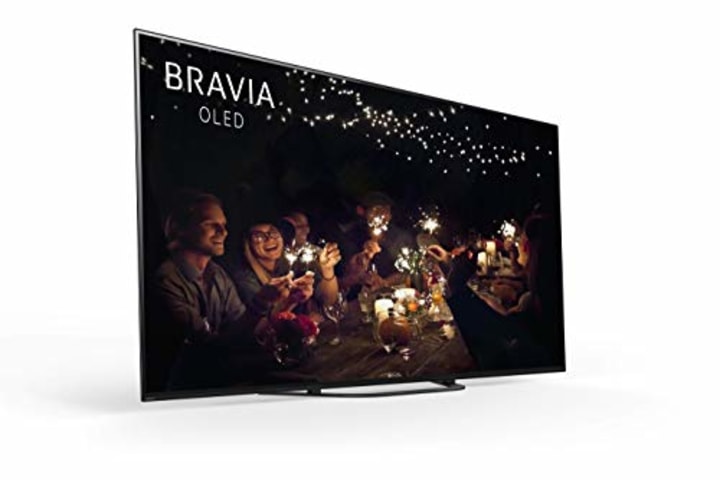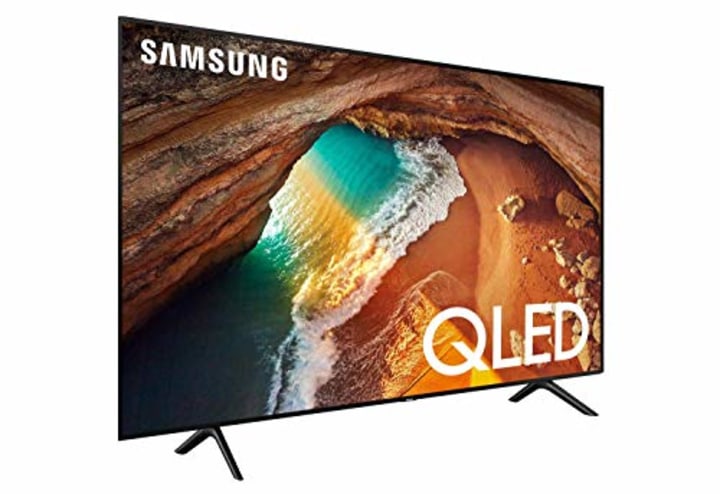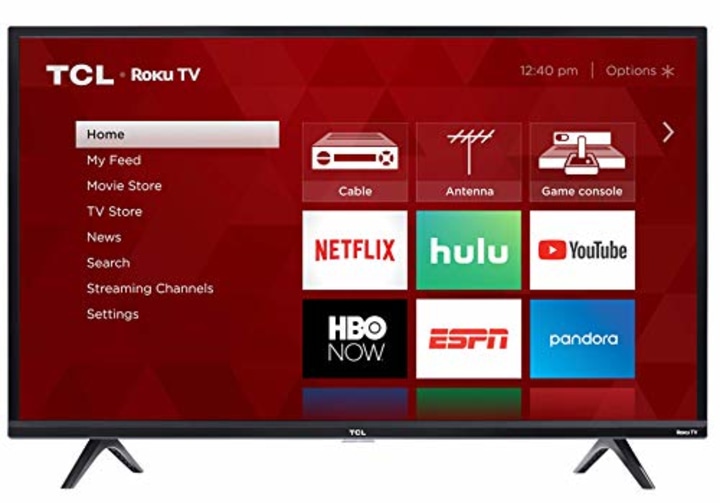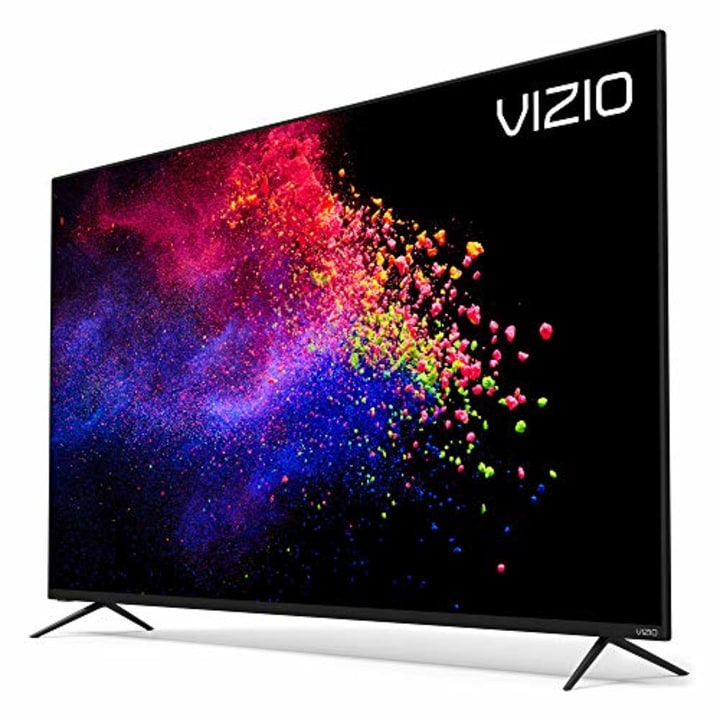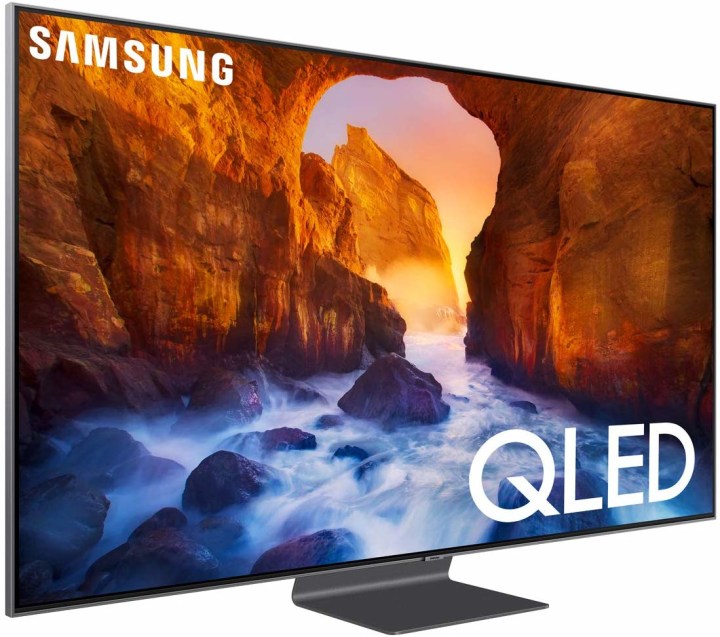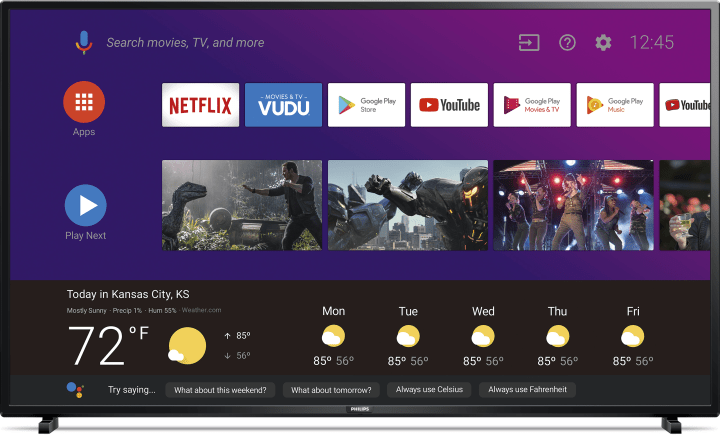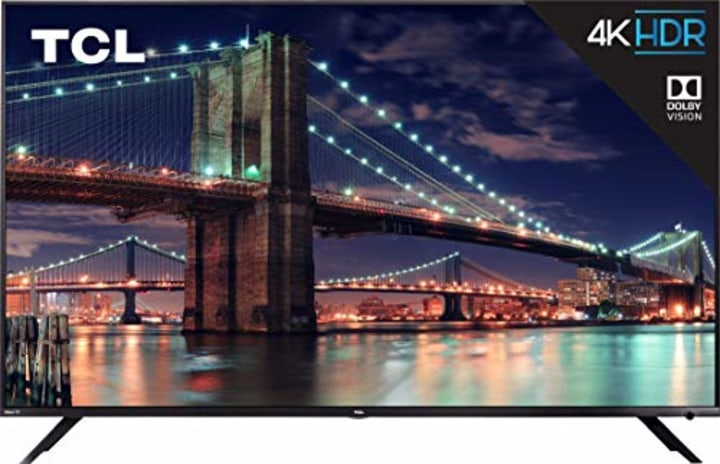Buying a TV used to be simple. There were less specs and standards to consider when you were shopping for a superior television. Now, the TV buying experience has changed and shoppers expect higher quality characteristics from a TV: 4K HDR, OLED versus QLED, specific screen sizes for different uses, smart TV capabilities and so on.
It may have been some time since you thought about upgrading your television — but with continued stay-at-home orders, you might want to consider scanning the market for quality TVs to keep up with your favorite shows, movies and streaming services. Before you click “buy,” here are some buzzwords and technologies that are worth noting. Feel confident about your purchase and read on to see some of the best televisions on the market.
Full coverage of the coronavirus outbreak
In this article
What is 4K resolution? 6K? 8K? And what screen resolution do you need?
Resolution matters and it’s the first thing any buyer should consider. Why? Ever take a photo on your smartphone and zoom in real close? It gets all fuzzy, doesn’t it? Those fuzzy little dots of color are called pixels. And when it comes to picture quality, the more densely packed the pixels are, the more lifelike things become. That’s called “high resolution.”
The same rules apply to your TV. The higher the resolution, the better.
Bottom line: Buy a 4K TV, otherwise known as an Ultra High Definition (UHD) TV. It offers four times the resolution of HD TV. With eight million pixels, you have enough resolution to give you a picture worth watching on Super Bowl weekend. You can hold off on a 6K or 8K until movie makers catch up. Here are some examples of TVs with different resolutions in different price points:
1. Insignia 43-inch 4K Ultra HD Smart LED TV HDR, Fire TV Edition
2. Samsung 65-Inch 4K UHD 7 Series Smart TV
What is HDR in your TV mean? Ultra HD?
Most newer models offer the buzzworthy feature that is high dynamic range (HDR) already. It means the TV is designed to offer a brighter or more vivid picture.
HDR is a catch-all term for a variety of ways to deliver it. If vividness is especially important to you, upgrade to a 4K TV that features “ultra high definition” (UHD) or some version of HDR, as well. It’ll get you an even better color presentation. If you see “Dolby Vision” or Samsung’s “HDR 10+” advertised, that’s considered a higher end form of HDR that promises to deliver striking scenes.
Quick Tip: TVs that are bright will also offer a better-performing HDR.
Here are some examples of TVs sporting Dolby Vision, UHD and HDR 10+ in different price points:
1. LG Nano 8 55-Inch 4K Ultra HD Smart TV with Dolby Vision
2. Samsung 58-Inch 7 Series 4K UHD Smart with HDR10+
OLED? LCD? LED? QLED? Which panel type is right for you?
When it comes to TVs in the higher-end spectrum, many sport either OLED or QLED panels, acronyms you’ll see sprayed across their names. According to Popular Mechanics, they’re also “the most prevalent” terms you might encounter during your TV shopping journey. Here’s a quick breakdown of what everything means:
- Liquid crystal display (LCD): The dominant type of screen display, having vanquished the short life of its plasma competitor.
- Light-emitting diodes (LED): Built into the TV, these basically act as a backlight for the display and offer much more contrast than a backlight ever could.
Though it came to dominate the TV market — meaning you don’t have to worry about choosing between the two — the so-called “LED-LCD sandwich” left something to be desired. “There’s a big problem with LED-LCD TVs,” Popular Mechanics explained. “That backlight color— and how it’s rendered as an image by the LCD screen — can vary pretty widely from set to set.
So two broad solutions came forward:
Let our news meet your inbox. The news and stories that matters, delivered weekday mornings.
- Organic LED (OLED): Generally used by Sony and LG, this solution has the TV’s pixels emit their own light, resulting in a more contrasting image with a more vivid picture.
- Quantum LED (QLED): This Samsung and Vizio (and Hisense and TCL) solution is what it named a filter it built between the LEDs in its TVs and their LCD displays. That filter, sometimes inset with light zones that turn on and off, increases the contrast and vividness of the image.
If you are going for wider-than-average viewing angles, the more expensive OLED style is better, just expect to pay more. Either style will result in a great-looking movie or streaming show (as long as it’s, well, an actually good movie or show). Here are some examples of OLED and QLED TVs in different price points:
1. Sony BRAVIA 55-Inch OLED 4K Ultra HD Smart TV
2. Samsung Q60 43-Inch QLED 4K Ultra HD Smart TV with HDR
The best TV screen size for your space
TV sizes are based on the diagonal measurement of their screens. To determine the best one for your space, here’s a simple calculation, thanks to Samsung:
- Measure the amount of inches between you (or your couch) and your screen
- Divide that number by two
- The result is your optimal screen size
So if you sit 10 feet from your couch, your ideal screen size is 60 inches. Now, of course, that’s a recommendation from a TV seller — use it as a starting point and see how well it works for you. Consumer Reports, for example, says that if you have a 60-inch screen, you’ll want to sit at least 8 feet away. Here are some examples of TVs in different sizes and different price points:
1. TCL 40-Inch 1080p Smart LED TV (limited availability)
2. VIZIO M-Series Quantum 55-Inch 4K HDR Smart TV
3. Samsung Q90 82-Inch QLED 4K Ultra HD Smart TV
Do you need a smart TV?
Don’t overthink this one. Smart TVs have WiFi baked in and give you access to your streaming apps, as well as other TV apps. Whether it’s a smart TV or not, you will be able to make it smart using any of the myriad smart streaming devices and services available — I plugged an Apple TV device into my non-smart TV — you’ll need an HDMI cable to do the same — and haven’t looked back.
If you are partial to Amazon’s Fire TV, Roku-enabled TV or Android TV, there are TVs that come with it. Other brands like VIZIO, Samsung, and LG offer their own unique smart platform. As mentioned above, though, you can supersede their program using any smart TV device.
Quick tip: Don’t expect your smart TV to work wonders until your internet speed at home is in the fast lane.
What About Voice-Assistant TV?
If you like asking Google Assistant or Amazon Alexa for help, many TVs will enable you to change channels, lower volume, and generally control the TV using simple voice commands. Some will even allow you to control your other smart-compatible devices (like thermostats and lights) right from that 60-inch screen. You’ll know from the manufacturer’s description whether voice assistant technology is included.
Here are some examples of smart TVs with built-in streaming services:
1. Philips 50-Inch 4K Ultra HD Android Smart LED TV with Google Assistant
2. TCL 55-Inch 4K Ultra HD Roku Smart LED TV
3. Insignia 43-inch 4K Ultra HD Smart LED TV HDR, Fire TV Edition
Does your new TV need a sound bar?
TVs are so thin now that some users complain they don’t pump out enough high quality sound. A sound bar fixes this problem.
What else to consider before buying a new TV?
1. Refresh rate
The refresh rate determines how frequently the TV reloads (or refreshes) the picture for realistic motion and less blur. Go with a high refresh rate that’s over 120Hz — especially if you watch action-packed sports.
2. Contrast-ratio
You can largely neglect this spec. There’s no real standards set in place on what’s best — and most common specs in modern TVs result in a similar picture.
3. HDMI ports
The more HDMI ports, the better. This way you can connect any gadgets, cable boxes, or sound bars you want to add. Look for the latest HDMI 2.1 format.
Bottom Line
This year, get a TV with 4K screen resolution (or better) and be smart about how it fits into your space.
And when you have the TV, consider writing a review on the site where you purchased it. Your feedback can help future window shoppers find their next dream TV.
More shopping guides and recommendations
Find the latest from NBC News Shopping guides and recommendations.
Download the NBC News app for full coverage of the coronavirus outbreak.
Megan Foster contributed.


